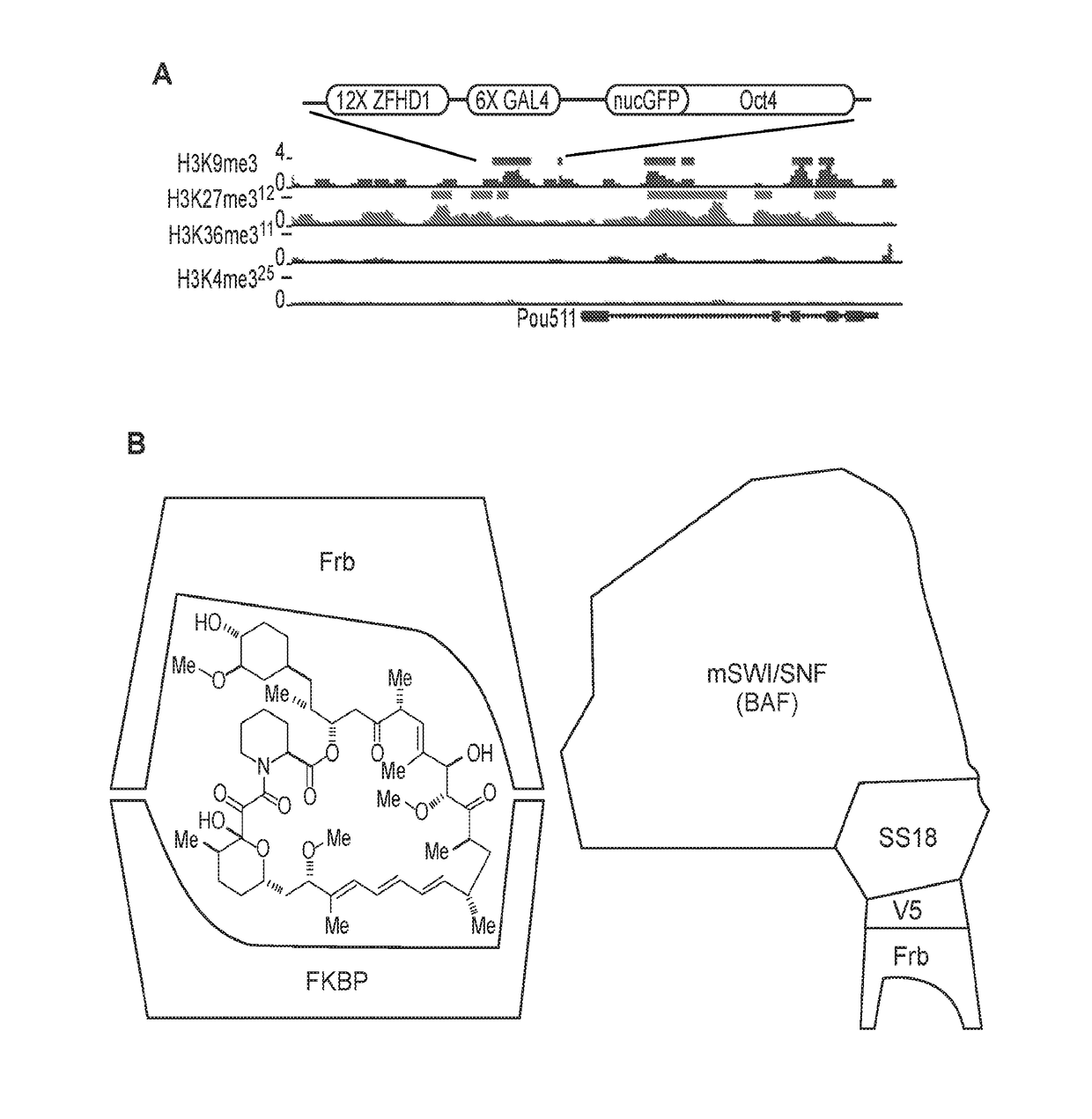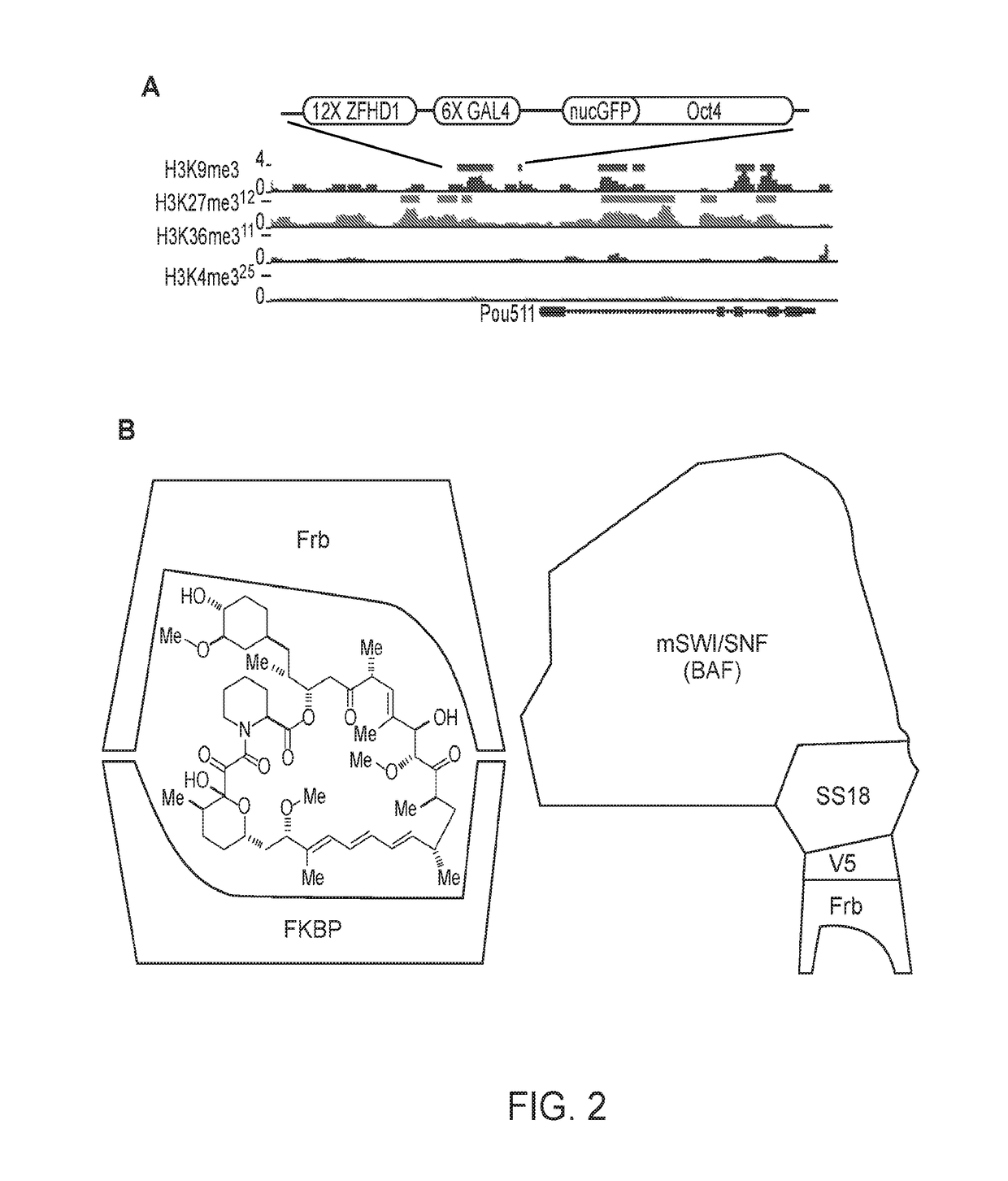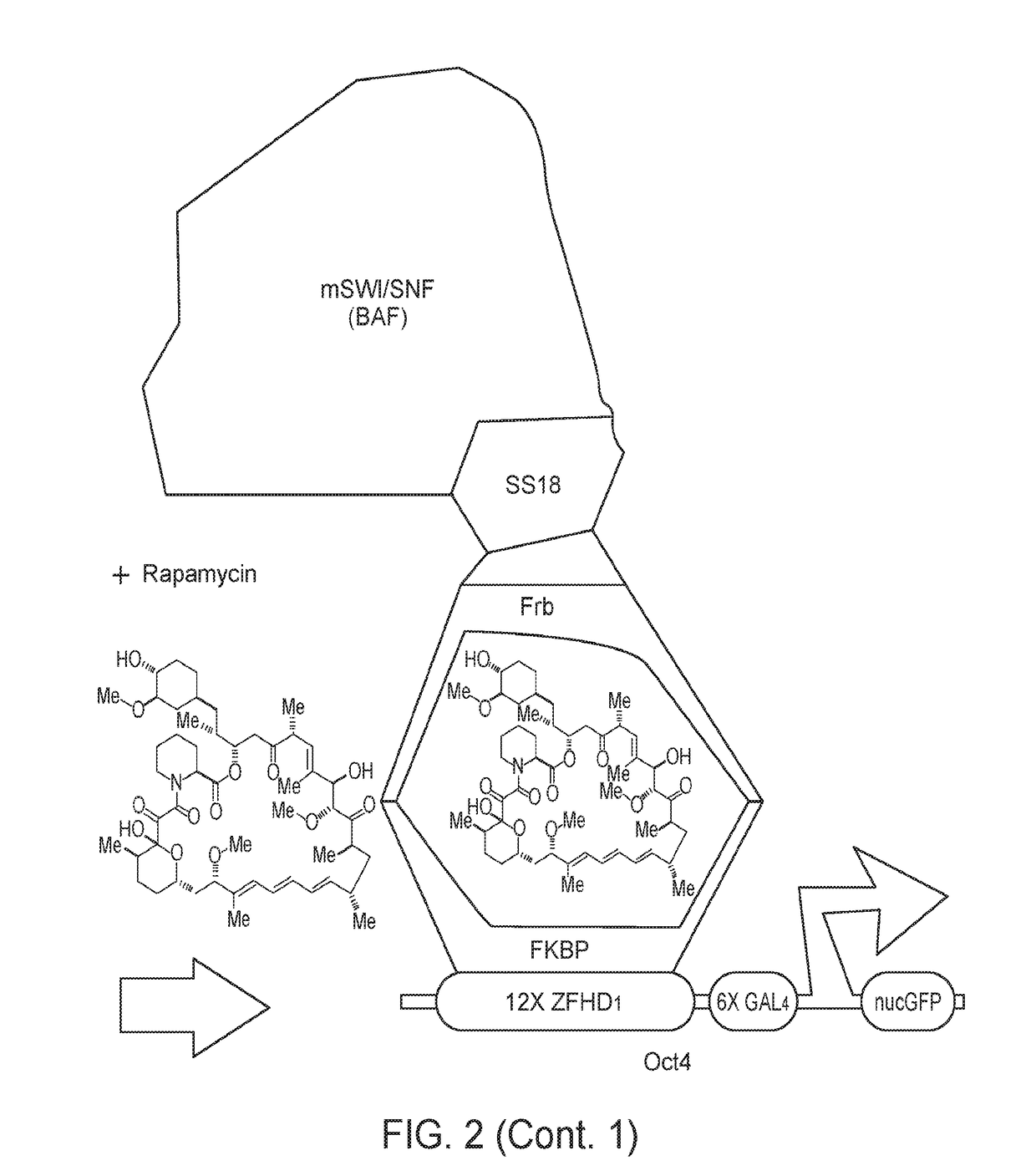Methods of Inducibly Targeting Chromatin Effectors and Compositions for Use in the Same
a technology of chromatin effectors and compositions, applied in the direction of fusion with rna-binding domains, peptide sources, peptides, etc., can solve the problems of inability to accurately assemble chromatin templates, limited screening methods, and inability to reflect the in vivo function of chromatin regulators
- Summary
- Abstract
- Description
- Claims
- Application Information
AI Technical Summary
Benefits of technology
Problems solved by technology
Method used
Image
Examples
example i
of BAF (mSWI / SNF)-Polycomb Opposition in Normal and Oncogenic States
A. Abstract
[0108]The opposition between polycomb and mSWI / SNF (BAF) controls genome-wide chromatin accessibility and has been implicated by mutation in greater than 25% of human cancers. To define the underlying mechanism of opposition, we have used chemical inducers of proximity (CIPs) to recruit chromatin remodelers to one allele of the polycomb-repressed Oct4 locus in fibroblasts. We find that recruitment of BAF complexes results in rapid eviction of polycomb complexes and the development of accessible chromatin within 30 minutes. CIP removal reverses this sequence of events, leading to polycomb-repressed heterochromatin. Recruitment of tumor suppressor defective complexes including those lacking BAF47 (hSNF5) lead to a failure of polycomb eviction, while recruitment of oncogenic SS18-SSX-bearing BAF complexes leads to a much larger domain of BAF occupancy and a corresponding increase in PRC eviction. These studi...
example ii
cus Targeting Complexes
[0135]The second version of this method involves a modified, more widely-applicable system, which involves targeting any genetic locus (not only Oct4 as in Example 1, above) within a cell, using a guide RNA to provide specificity as part of the CRISPR system. (FIG. 12). The guide RNA is modified to have binding sites for the MS2 RNA binding protein. The MS2 protein is fused to a peptide tag that binds one side of a bifunctional molecule such as rapamycin, FK1012, FK506, cyclosporine or abcissic acid. In addition, a chromatin or transcriptional regulator of interest is fused to a protein such as Frb that binds the other side of the bifunctional molecule (FIG. 12). When the bifunctional molecule is added the chromatin regulator is rapidly (within 2 minutes) brought to the genetic locus of interest bearing any chromatin mark(s) of interest. Because of the high on- and off-rates of the two tags from the opposite sides of the bifunctional molecule, a cloud (e.g., i...
PUM
| Property | Measurement | Unit |
|---|---|---|
| molecular weight | aaaaa | aaaaa |
| molecular weight | aaaaa | aaaaa |
| molecular weight | aaaaa | aaaaa |
Abstract
Description
Claims
Application Information
 Login to View More
Login to View More - R&D
- Intellectual Property
- Life Sciences
- Materials
- Tech Scout
- Unparalleled Data Quality
- Higher Quality Content
- 60% Fewer Hallucinations
Browse by: Latest US Patents, China's latest patents, Technical Efficacy Thesaurus, Application Domain, Technology Topic, Popular Technical Reports.
© 2025 PatSnap. All rights reserved.Legal|Privacy policy|Modern Slavery Act Transparency Statement|Sitemap|About US| Contact US: help@patsnap.com



